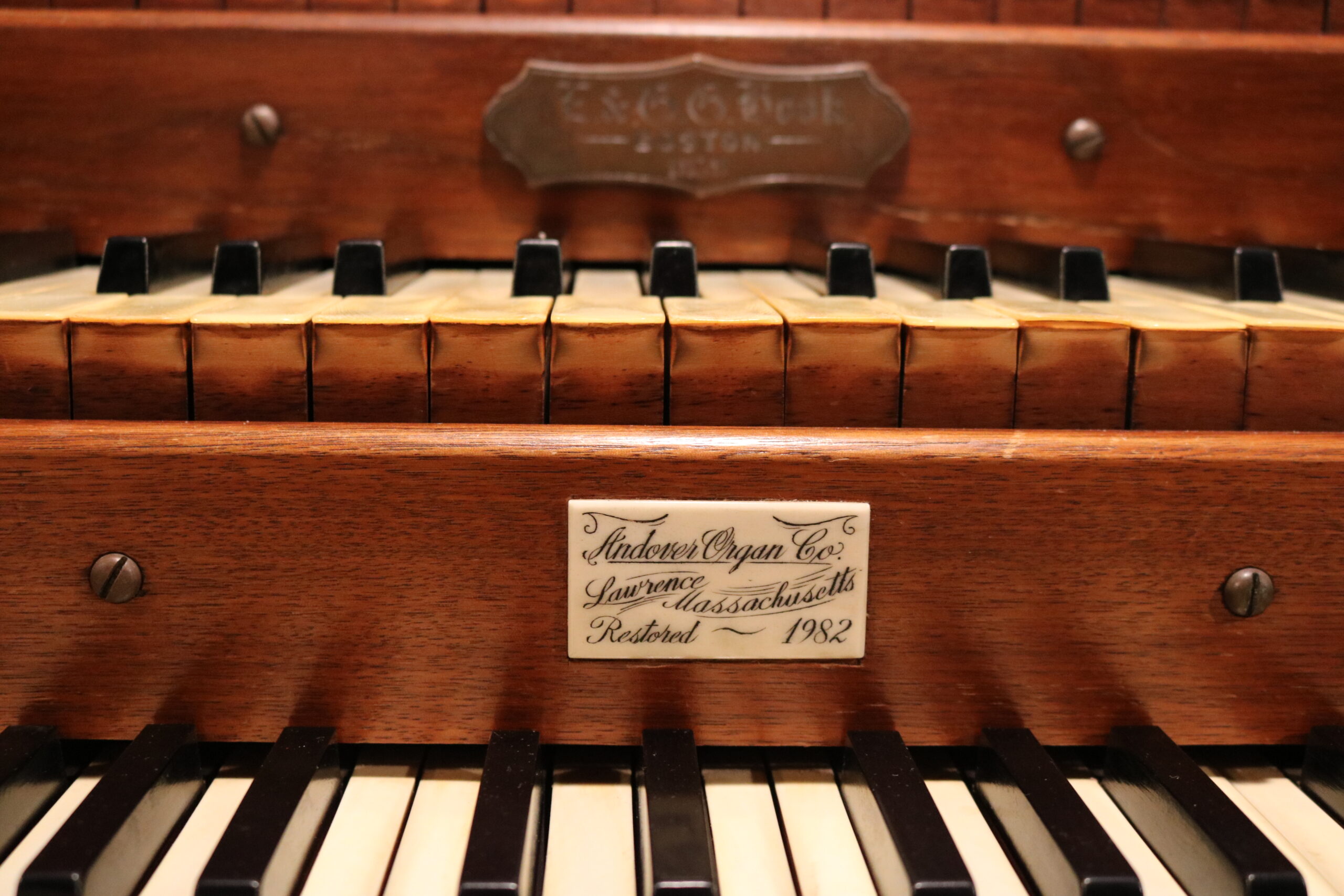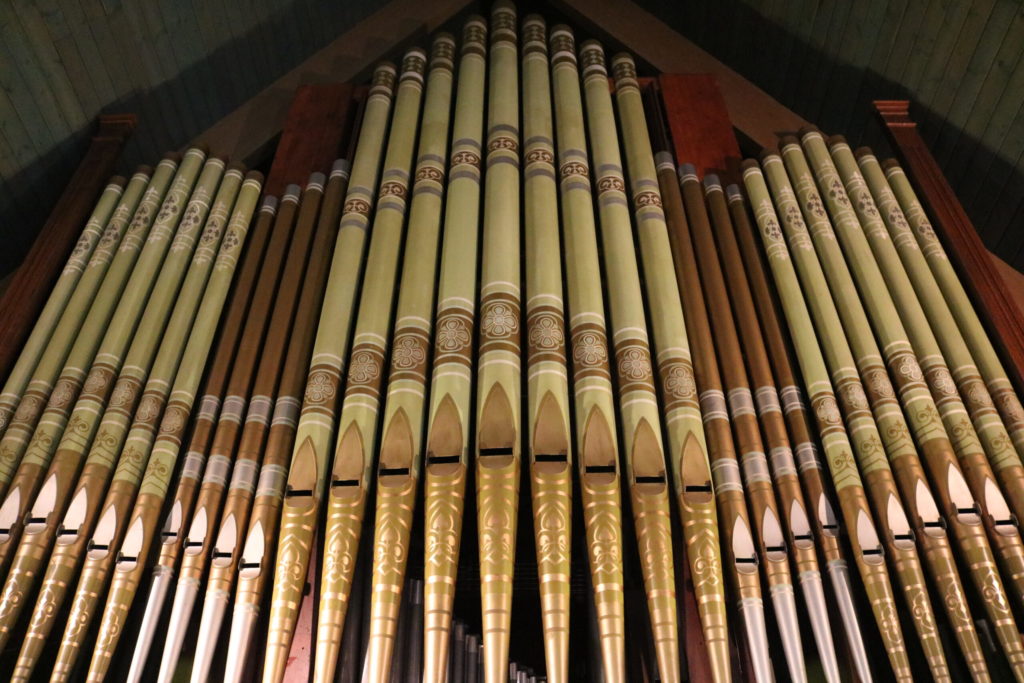An instrument with more than 160 years of stories…

The unique E. & G.G. Hook pipe organ visible in the choir loft at Holy Trinity has a long history that predates even the 1892 founding of the congregation. The organ was originally installed in the Church of the Unity on West Newton Street, Boston, in 1859. After this building was demolished in the 1890s, the organ was moved to Zion Lutheran Church, also on West Newton Street. When this congregation relocated to a new building in the 1950s, the old building was conveyed to All Saints Lutheran Church, which worshipped there until it disbanded in the 1970s.
The organ was removed from its second home in 1979 by the Andover Organ Co. and placed in storage until a new home could be found. It was removed from storage in Jan. 1982 with restoration and installation in North Easton continuing through November. The front of the swellbox was fitted with a larger set of expression louvers to replace the originals which were not enlarged when the Swell was expanded to full-compass in 1870 by the original builder. The organ was dedicated in its new (3rd) home at Holy Trinity Lutheran Church in North Easton on November 21, 1982 by Stephen E. Long.
Originally the organ had no casework or façade. Those were added when the organ was moved ca. 1896-98 by Geo. S. Hutchings. The Great to Pedal coupler is on a reversible foot lever that is not original. The Swell to Pedal coupler took the place of the original Great to Pedal drawknob.
Since its reinstallation, the organ has supported the music ministry of the congregation, and has also been used for a variety of public concerts and other events.

Don’t know your great from your swell?
The American Guild of Organists is an excellent resource for those wishing to learn more about these incredibly complex musical instruments. In particular, we recommend checking out the “Young Person’s Guide to the Pipe Organ, available on their website.




Stop List
E. & G.G. Hook Opus 254, 1859

Great
[Unenclosed]
8′ Open Diapason
8′ Melodia (TF) 39 pipes
8′ Stopped Diapason Bass 17 pipes
4′ Principal
2 2/3′ Twelfth
2′ Fifteenth
II Sesquialtera 112 pipes
II Mixture 112 pipes
8′ Trumpet
Swell
[Enclosed]
16′ Bourdon
8′ Open Diapason
8′ Keraulophon
8′ Stopped Diapason
4′ Principal
4′ Violin
2′ Fifteenth
II Dulciana Cornet 112 pipes
8′ Trumpet 56 pipes
8′ Hautboy (TC-44 pipes)
8′ Vox Humana 56 pipes
Choir
[Unenclosed]
8′ Open Diapason 44 pipes
8′ Viol d’amour 56 pipes
8′ Dulciana 44 pipes
8′ Clarabella (TC- 44 pipes)
8′ Stopped Diapason treble (TC- 44)
8′ Stopped Diapason bass 12 pipes
4′ Celestina
4′ Flute a’cheminee
8′ Clarionet (TC-44)
Pedal
16′ Double Open Diapason (27 pipes on all stops)
16′ Double Stopped Diapason
8′ Violincello
Couplers
SW/GT
SW/CH
CH/GT (sub-octave)
GT/PED (Hitchdown)
SW/PED
CH/PED

